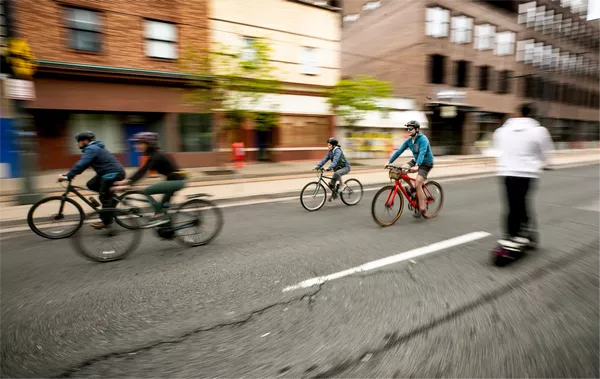As Paris gears up for the 2024 Olympic Games, the city’s bike lanes are experiencing an unprecedented surge in activity. The busy bike routes, now a bustling network of new paths, present a dynamic and intricate scene for cyclists. Navigating through these lanes involves mastering a blend of rapid traffic lights, pedestrian crossings, and varying rules at junctions, which can be overwhelming for newcomers.
Soon, the city will host up to a million visitors, who will be encouraged to utilize the newly developed Olympic cycling network. In a remarkable engineering feat, Paris has added 34 miles of new bike routes over the past two years, enhancing an already expanding network and making this year’s Games the first in modern history to feature a fully cyclable city.
Previous Olympic cities have made efforts to integrate cycling into their events, though with mixed results. Beijing’s 2008 Games saw ambitious plans for cycle hire that faltered after the Games. London 2012 experienced a notable increase in cycling—20% more on bridges and 67% more near the Olympic site—though a tragic incident involving a cyclist highlighted ongoing safety concerns. In Rio 2016, the intention to link all venues with cycling routes fell short, overshadowed by a catastrophic collapse of a seafront cycle route. Tokyo 2020 aimed to double its cycling lanes but faced inconsistent implementation, with the global pandemic further impacting visitor numbers.
In Paris, however, a concerted effort by cycling advocates like Corentin Roudaut from Paris en Selle has shaped the city’s Olympic cycling legacy. During a recent tour, Roudaut guided us along a new route to the Stade de France, showcasing the blend of on-road bike lanes and the Saint Denis Canal towpath. This route concludes at a modern double-decker bike parking facility, one of 20,000 new cycle spaces introduced across the city. Other highlights include a high-tech bike park at Gare du Nord and an expanded city cycle hire scheme, Velib, which now boasts 20,000 bikes. Additionally, the merged Lime and Dott, now known as Tier, has added 10,000 electric bikes to their fleet, increasing the total to 30,000.
The city’s efforts range from simple improvements, like installing granite curbs on city boulevards to create two-way cycle paths, to more complex developments. For instance, the area around the Porte de la Chapelle Arena, situated in a low-income neighborhood, has undergone significant transformation. The roadway has been reduced from four lanes to two, with the addition of wider sidewalks, new cycleways, and extensive green spaces, reflecting a broader initiative to enhance the city’s greenery.
Paris’s cycling infrastructure expansion gained momentum during the COVID-19 pandemic, leading to a significant increase in daily bike trips, now estimated at half a million—an 11% share of total trips, compared to around 5% in 2019. City officials hope that 10% of the estimated 10 million Olympic visitors will use bikes to travel to competition venues. Security measures may restrict access to certain central zones, so cyclists are advised to check if they need passes for their journeys.
This transformation was driven by advocacy groups, including Collectif Vélo Île-de-France and Paris en Selle, who pushed for a more bike-friendly Olympics. Paris Mayor Anne Hidalgo acknowledged their influence, stating, “The cycling charities push us when we are too slow, and they are right to do so.”
The city’s western arrondissements, traditionally more car-oriented, have also contributed to the network, integrating their infrastructure into the Olympic plans. These developments will remain a legacy of the Games, complementing other improvements like a cleaner Seine for swimming. Adrien Sartre, deputy mayor responsible for cycling, summarized the impact: “It’ll make great memories and provide additional cycling infrastructure for Parisians.”
As we returned from the Stade de France along Paris’s busiest route, Rue de Sebastopol, an automatic counter indicated 2.66 million cycles so far this year. The lane, now congested with riders, reflects the success of the city’s cycling initiatives. At the junction with Rue de Rivoli, the vibrant scene showcases the integration of cargo bikes and the active cycling culture flourishing under the summer sun.
Despite some deviations from the original plan, Corentin Roudaut expressed satisfaction with the outcomes, noting that Paris is set to host the first fully bikeable Olympic Games. As a large sign encourages visitors to cycle to the Olympics, the contributions of Paris en Selle and other advocates are evident in the city’s transformation into a cycling haven.

